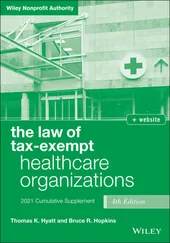The parameters relating to the rules that are the result of the collective agreements and internal policies of our applied case can also be modified, as well as the sectorization of the territory covered by the company.
The user provides a previously designed, initial schedule. From the database updated with the latest developments in staff and beneficiaries, the prototype recalculates the routes and generates an Excel file with the list of changes that compares to the initial schedule that was supplied as an input. The decision-maker will thus have the list of reassigned interventions with their date, their start and end times (unchanged since they are contractually fixed), the name of the beneficiary and the name of the newly assigned careworker.
We conduct our tests across several geographic areas in which Adomni-Quemera operates. We start from the initial weekly schedules established in August 2019 and update this schedule to match the October 2019 beneficiary and stakeholder population, which had changed since August. The results are given in Table 1.1. Each instance is characterized by its number of current beneficiaries, its number of current careworkers and the number of services required for the week. In the “Beneficiary variation” column (resp. “Careworker variation”), we specify the number of changes in the beneficiaries (resp. careworkers) compared to when the initial planning was established. Thus, “+1/-2” means that one person has integrated the organization and that two people have left. Next, we indicate the sum of the waiting times and travel times for all careworkers over the whole week. Finally, we indicate the execution time of the algorithm.
The tests were carried out on a machine with the following characteristics: Intel RCoreTMi5-7440HQ CPU 2.80GHz with 16GB of RAM. The optimization algorithm was developed in Java, and we used CPLEX to solve the PLNE. On each of the instances processed, we have variation in beneficiaries and/or careworkers, for which it should be noted that the overall hourly volume of work and the overall hourly volume of services requested remains similar to those provided in the initial schedule.
Due to the method being exact, we found the optimal solution for each of the proposed instances, that is, the solution that minimizes the overall waiting time of the careworkers. Execution times are very fast (at worst, in the order of a minute on the instances tested). Note that minimizing waiting times produces solutions with very low travel times, except for two instances (4 and 7). Since Instance 7 is the largest in terms of the number of careworkers, the average travel times per careworker are in fact no longer than for the other instances. We can compare the results with Instance 6, which has more careworkers but almost half as many services. The routes are far less busy, involving less travel and therefore less travel time. For Instance 4, because the associated sector is geographically larger, the longer travel times are not surprising. However, as we have no constraints or objectives of minimizing travel times, it is not excluded that there is a solution with equivalent waiting times but shorter travel times.
We can notice that Instances 5 and 6 have a similar number of services. As the variations of careworkers are much greater in Instance 6 , the continuity constraints are harder to respect and the graphs constructed through our method are denser. This explains the difference in execution times.
Note also that waiting times greater than 90 minutes are not counted. Therefore, it is possible that the routes produced are fragmented, which implies a long amplitude. While a long break in the day is not disruptive, it is not desirable, and as such having a compact route is also a criterion of staff satisfaction.
Table 1.1. Numerical results
| Instance |
Number of beneficiaries |
Number of careworkers |
Number of services |
Beneficiary variations |
Careworkers variations |
Waiting time (h) |
Travel time (h) |
Execution time (s) |
| 1 |
3 |
4 |
56 |
– |
+1/-1 |
4. 2 |
3. 8 |
2. 2 |
| 2 |
11 |
5 |
85 |
+0/-1 |
+2/-3 |
4. 69 |
6. 49 |
2. 1 |
| 3 |
18 |
6 |
95 |
+2/-4 |
– |
8. 41 |
5. 7 |
7. 6 |
| 4 |
26 |
8 |
156 |
+2/-7 |
+2/-3 |
1. 5 |
19.3 |
40.6 |
| 5 |
26 |
11 |
179 |
+6/-5 |
+2/-2 |
7. 15 |
6. 4 |
30.13 |
| 6 |
40 |
18 |
191 |
+8/-11 |
+8/-6 |
5. 83 |
1. 83 |
65.8 |
| 7 |
92 |
15 |
337 |
+7/-10 |
+3/-5 |
12. 0 |
21.3 |
101 |
1.7. Conclusion and perspectives
We have developed a method that solves real-world problems by taking into account the legal constraints resulting from French national collective agreements, internal policies specific to our case study, as well as changes to beneficiaries and staff. The objective of minimizing waiting times is to improve the working conditions of staff in order to limit turnover. These waiting times are calculated using Adomni-Quemera’s definition. However, while some periods of inactivity are perceived by careworkers as wasted time, others are viewed as real breaks and can be appreciated by staff. Proposing a new definition of waiting times, based on the experiences of careworkers, could result in new schedules that are even more satisfactory and adapted to each person. We can also consider a multi-objective approach which would also make it possible to limit the travel time and/or the amplitudes of the work shifts, which do not always go hand in hand with the minimization of waiting times.
Time constraints turn out to be a scientific obstacle and can contribute to a substantial degradation of the schedule. A tool identifying the most impinging time constraints would make it possible to determine the services for which it would be advantageous to renegotiate the contractual hours with the beneficiaries.
The proposed method is adapted to changes in the composition of staff and beneficiaries and to the strategic update; however, it is not necessarily adequate in the event of a one-off absence. Indeed, if a worker is temporarily unavailable, the organization does not always have a careworker available who is qualified to replace them at short notice. It is therefore necessary to overload the other careworkers and potentially shift the appointment times so as to be able to obtain a feasible solution. Respecting the continuity of care constraints becomes very restrictive and is no longer necessarily relevant. Moreover, as these absences are often unexpected, it is difficult in practice to upset the whole schedule at the last minute. Thus, it would be interesting to adapt our approach to the management of daily eventualities, by relaxing the constraints of continuity and by considering stability from a new angle: no longer that of continuity of care, but rather with the objective of impacting as few routes as possible, in order to meet operational requirements in the field.
Béguin, F. (2018). Le nombre de candidats aux écoles d’aides-soignants en baisse. Le Monde [Online]. Available at: https://www.lemonde.fr/sante/article/2018/05/11/le-nombre-decandidats-aux-ecoles-d-aides-soignants-en-baisse_5297453_1651302.html.
Читать дальше












